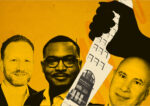Trending
Condo sales up in two bright spots
There were two bright spots in the South Florida residential real estate market last month as condo sales on Miami Beach rose 36 percent and in Aventura 56 percent over the last 18 months.
The uptick is one indication that the glut of residential units on the market in South Florida may be shrinking. As some real estate experts see it, the past few weeks are a glimpse of the very beginning of a market turnaround.
At the very least, one fact is certain in these two desirable locales: there are more people ready to buy. “We’re seeing a lot more buyers, not just people looking,” said Miami realtor Marci Trautenberg.
While Trautenberg has represented an influx of second-home buyers from South America, she has also seen an increase among buyers who will occupy their units.
The prices on Miami Beach are too good for prospective buyers to resist. The average sale price per square foot of $320 was 30 percent lower than the rate from December 2007. The median price for a condo was $205,000, compared to $340,000. There were 76 sales, compared with 55 in December 2007. Condos with multiple sales included the Beach Club, Hallandale Beach and Parc Central and Mystic Pointe condos in Aventura.
But the most telling statistic comes from the supply side. The number of Miami Beach condos on the market shrank from 3,836 to 3,680. Taking into the account the increase in sales, beach inventory went from a 70-month supply at the beginning of 2007 to a 48-month supply by the end of February, based on statistics from data compiled from the area multiple listing service.
“In a couple of months we will be back to normal if sales continue at that rate,” Trautenberg said about inventory levels on the Beach.
In the Aventura area, sales in February rose 56 percent over the same period, from 39 to 61 deals. Condos sold for a median price of $196,000, compared to $315,000 in December 2007. The inventory shrunk from a 52-month supply to a 29-month supply.
Another area in Miami where brokers hope for a turnaround is Brickell Avenue, said Charles Forschini, vice chairman in the Miami office of CB Richard Ellis. Although a large pool of new condo units have flooded the market here, Forschini sees potential for a work-live district that “rivals any other in the world.”
Not everywhere in Miami is facing the same prospects. Areas saturated with newer condos with more empty units — such as downtown, Sunny Isles and the Biscayne corridor — will likely take longer before inventories start to shrink in a noticeable way. Lenders are less willing to finance buildings with a high number of developer-owned units or defaults.
Is the increase in sales activity in these two bright spots a sign of things to come throughout South Florida? “The market always finds a common ground,” Forschini says. “You’ll see that happen first where the market has aged and there is not too much inventory. In areas where dramatic numbers of units were added, it will be much more difficult.”
In addition to buyers being ready to make offers, financing is becoming more readily available. Young professionals are able to get Federal Housing Administration loans for first-time buyers, while conventional loans are available to buyers with about 20 percent down and good credit.
“A couple months ago, really good buyers were being turned down,” Trautenberg said. “I had doctors with perfect credit turned down. Banks were being overly cautious. Now it is a little looser. If a buyer has 20 percent down and good credit they can get financing.”




